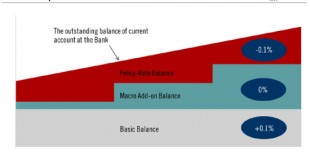Under a three-tier system, the Bank of Japan (BoJ) introduces a negative interest rate (-0.1%). Haruhiko Kuroda did it again. After having continuously denied the idea of using a negative interest rate, the governor of the Bank of Japan (BoJ) has now decided to introduce one. More specifically, the BoJ will adopt a three-tier system in which the outstanding balance of each financial institution’s current account at the Bank will be divided into three tiers, to each of which a positive...
Read More »Growth accelerated markedly in France and Spain in 2015
Private consumption drives 2015 French and Spanish GDP growth and the trend is likely to continue in 2016. Spain and France are the first countries among the euro area’s largest economies to publish GDP figures. According to preliminary estimates, Spanish and French real GDP expanded by 0.8% and 0.2% q-o-q respectively in Q4, both in line with consensus expectations. Over the year, GDP rose by 3.2% and 1.1% respectively in Spain and in France. The relatively good performance of both...
Read More »We expect the Fed to remain on hold in March and that it will hike ‘only’ twice this year
Macroview The Fed no longer considers that the risks to the outlook are ‘balanced’. However, yesterday's statement was not particularly dovish. After its meeting earlier this week, the Federal Open Market Committee (FOMC) published a statement where, as widely expected, it acknowledged that “economic growth slowed late last year”. It also added a comment that “the Committee is closely monitoring global economic and financial developments and is assessing their implications for the labor...
Read More »The reasons behind the turmoil on global markets
The absence of deterioration in economic fundamentals suggests that conditions now look ripe for a rebound in equity markets. Equity markets have had their worst start to the year since 1897, following on from bouts of elevated volatility in 2015, and currency markets have also seen major disruption. But elevated market volatility this year was not unexpected and economic fundamentals are little changed. Conditions now look ripe for a rebound. What’s worrying markets? Recent market...
Read More »The recent decline in equity markets and the rationale for a bounce-back
The decline in equity markets since the start of the year stands out as one of the largest in history in January, not only in its magnitude but also its suddenness. One has to go back to 1897 to find such a bad start for equity markets. This note will analyse the situation on the markets and the prospects for a rebound. As often in a large correction, one can find many causes. We think the following are the most significant: Monetary policy running out of steam. The fall in commodities...
Read More »Business surveys in the euro area: disappointing, but still resilient in terms of activity
Despite a drop in January, the composite PMI remains resilient in terms of real activity. We continue to expect the pace of euro area growth to speed up from 1.5% in 2015 to 1.8% in 2016. Euro area business surveys (PMIs and IFO) disappointed in January, partly as a reflection of global uncertainty related to EM growth and market volatility so far this year. PMIs survey: easing, but still at a high level According to Markit’s preliminary estimates, the euro area composite PMI eased from...
Read More »Euro area: little evidence of large second-round effects of oil on core inflation
Much of the ECB’s decision at the upcoming 10 March meeting will depend on the assessment of the effects of lower oil prices on inflation. We find little evidence at this stage of large second-round effects on consumer prices. Draghi’s latest hint at fresh monetary easing heralds a six-week period of waiting and guessing what the next measures might look like. One critical factor driving the decision will be the ECB’s assessment of indirect effects of lower oil prices on inflation....
Read More »European monetary policy: new ECB easing package now likely to be announced in March
ECB policy rates will remain “at present or lower levels for an extended period of time”. Another deposit rate cut, to -0.40% or even lower, looks likely to be part of the ECB’s toolkit, especially if the Fed turns more cautious in the meantime. The ECB left all policy settings unchanged at today’s meeting, as widely expected. At the same time, the overall tone of the press conference reflected yet another significant dovish shift in the ECB’s communication – one that the Governing...
Read More »Currencies: persistent market volatility should support funding currencies
The risks implied by the Fed’s tightening cycle and the new Chinese monetary regime, among other things, will favour funding currencies over carry currencies in the next twelve months. Instead of looking at single currencies, it is sometimes interesting to look at broader themes to have a better understanding of how a certain group of currencies might behave. Among the best-known themes or strategies are carry trades, which are based on the principle of systematically buying...
Read More »ECB Policy meeting preview: The central bank may have no choice but to act again by the Spring
We expect the ECB to remain on hold at the 21 January meeting, but the combination of market stress, lower oil prices and renewed concerns about global growth is likely to force the Governing Council to consider easing policy again by the Spring. Two weeks into 2016, six weeks after easing policy at the December meeting, here we are again: the ECB is under pressure to do more. Investors continue to react to a number of related concerns, including the uninterrupted fall in oil prices,...
Read More » Swiss Economicblogs.org
Swiss Economicblogs.org








